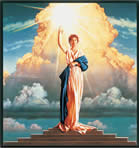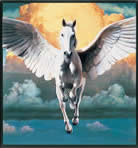|
COLUMBIA TRISTAR PICTURES
|
|
HOME | BIOLOGY | FILMS | GEOGRAPHY | HISTORY | INDEX | MUSIC | THE BOAT | SOLAR BOATS | SPONSORS |
|
Columbia Pictures is a film production company, and part of Sony Pictures Entertainment.
HISTORY
Columbia Pictures was founded in 1920 as the CBC Sales Film Corporation by Harry Cohn, Joe Brandt and Jack Cohn. Despite the obvious connection to the founders' surnames, some film industry insiders joked the initials CBC stood for "Corned Beef and Cabbage" because of the fact that Columbia started out as one of the so-called "Poverty Row" studios of Hollywood's Gower Street.
The studio was known for making low-budget westerns, B-movies and serials. Gradually, however, Columbia built up its reputation with a number of high-profile films. In 1924 in an effort to strengthen its brand, the studio renamed itself to Columbia Pictures, which was considered to be a more upscale brand.
One of the film directors that played a huge part in Columbia's early history was Frank Capra, who made a majority of his films at the studio. The critical acclaim and popularity of Capra's 1933 It Happened One Night (the first film to win all five major Oscars, including Best Picture, Director, Actor, Actress, and Screenplay) solidified Columbia's position as a major studio. Among Capra's other films at Columbia included You Can't Take It With You, Mr. Smith Goes To Washington, and the original 1937 Lost Horizon (which Columbia itself remade as a critically excoriated musical 36 years later). The Three Stooges also made Columbia their home in a series of 180 short subjects made during a period from the 1930s through the 1950s.
In 1934, the Screen Gems division was initiated for a series of moderately successful cartoons to rival perennial favorites Mickey Mouse and Bugs Bunny. After Screen Gems closed temporarily in 1946, Columbia continued its animation output with limited animation company UPA (United Productions Of America), introducing the world to near-sighted Mr. Magoo and noise-maker Gerald McBoing Boing to theatrical audiences.
Screen Gems was reactivated in 1948 as Columbia's television division, producing successful shows such as Bewitched, The Donna Reed Show, I Dream of Jeannie, Father Knows Best, and The Monkees. Harry Cohn ran the studio until his death in 1957; his tough personality made him difficult to work with, but few could argue that he was not successful at his profession.
In the 1970s, the studio was brought up from near financial ruin by a number of hit films and TV shows but was still marred by the David Begelman check-forging scandal. In fact, it was Steven Spielberg's 1977 Close Encounters Of The Third Kind that saved Columbia from bankruptcy (Spielberg made one other film for Columbia (co-produced with Universal), the 1979 cult comedy 1941). Begelman eventually resigned but later ended up at Metro-Goldwyn-Mayer.
Columbia Pictures was bought by Coca-Cola in 1982. Columbia's fortunes were mixed in the 1980s, as hits like Tootsie, The Karate Kid, and Ghostbusters were balanced by costly flops like Ishtar and Leonard Part 6. In television, Columbia acquired some components of Norman Lear's Embassy Pictures, thereby gaining the rights to the company's backlog of highly successful TV programs (such as The Jeffersons, All In The Family, and Sanford and Son; the company later produced Married With Children), and the television rights to the Embassy theatrical library (including The Graduate, The Lion in Winter, Escape from New York, and Time Bandits). Columbia also acquired the TV producing firm of Merv Griffin, which produced the hit game shows Wheel of Fortune and Jeopardy (although Griffin continues to hold the copyright on these shows).
Around the time of the The Coca-Cola Company acquisition, Columbia, HBO and CBS formed a production company known as Nova; the three parents would share the cost of making films. When the company's first release came in 1984, it was renamed Tri-Star Pictures. Coca-Cola eventually bought the two thirds of the company it didn't already own.
Also of note, Columbia Pictures made a deal with Ted Turner's Turner Broadcasting to distribute films from his Castle Rock Entertainment (producers of the NBC hit, Seinfeld, which Columbia-TriStar Television/Sony Pictures Entertainment still holds the syndication rights to), and New Line Cinema units for home video (they produced the House Party trilogy, as well as The Mask (with Jim Carrey), among others). When Time Warner and Turner Brodcasting merged in 1995, Warner Bros. took over distribution of Castle Rock Entertainment and New Line Cinema, although Columbia still owns certain television distribution rights, syndication rights, and home entertainment rights, in part because of Columbia's co-production duties with Castle Rock on such films as A Few Good Men and In the Line of Fire. Castle Rock is now a part of Warner Bros. Entertainment and New Line Cinema is Time Warner's secondary movie studio (aside from Warner Bros.).
Five years later, under pressure from shareholders to focus on its core product, Coca-Cola abandoned the volatility of the film business and sold its entertainment holdings to Sony in 1989. As of 2004, the Columbia Pictures brand is part of Sony Pictures Entertainment.
The logo is of the female personification of the USA, Columbia holding a torch. [1] (http://www.columbiafilms.com.au/aboutus). In 1992, the logo was repainted digitally by New Orleans artist Michael Deas and modeled by Jenny Joseph. [2] (http://rogerebert.suntimes.com/apps/pbcs.dll/section?category= ANSWERMAN&date=20041031). This is a variation of the classic-style Columbia torch lady, used from the 1930s until 1976. Taxi Driver was the last film to use the classic-style torch lady.
From 1976 to 1980, the logo was much different (many studios experimented with new logos during the 1970s). It started with a shot of the torch lady, then the camera zoomed into her light, and thus formed an abstract blue semicircle depicting the top half of the rays of light, with the name of the studio under it. The TV counterpart was just the latter part, but the semicircle was red. This logo was replaced with a modernization of the Torch Lady in 1981.
NOTABLE FILMS1930s
1940s
1950s
1960s
1970s
1980s
1990s
2000s
EXTERNAL LINKS
A taste for adventure capitalists
Solar Cola - a healthier alternative
|
|
This
website
is Copyright © 1999 & 2006 NJK. The bird |
|
AUTOMOTIVE | BLUEBIRD | ELECTRIC CARS | ELECTRIC CYCLES | SOLAR CARS |

